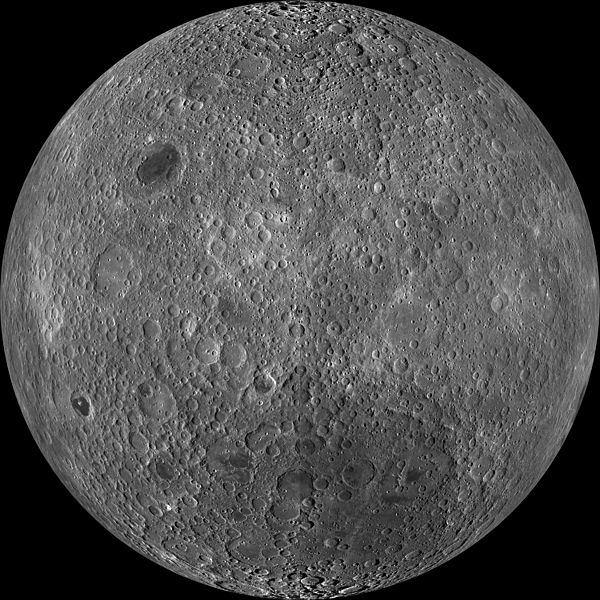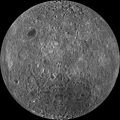Fichier:Moon Farside LRO.jpg
Apparence

Ñatanaʋ pʋnɛ pɩ-walanzɩ : Kpaɣna pɩkɩsɛlɩ 600 nɛ pɩtalɩ 600 ñɩŋgʋ. Tʋtʋ lɛɛtʋ : Kpaɣna pɩkɩsɛlɩ 240 nɛ pɩtalɩ 240 ñɩŋgʋ | Kpaɣna pɩkɩsɛlɩ 480 nɛ pɩtalɩ 480 ñɩŋgʋ | Kpaɣna pɩkɩsɛlɩ 768 nɛ pɩtalɩ 768 ñɩŋgʋ | Kpaɣna pɩkɩsɛlɩ 1 024 nɛ pɩtalɩ 1 024 ñɩŋgʋ | Kpaɣna pɩkɩsɛlɩ 2 048 nɛ pɩtalɩ 2 048 ñɩŋgʋ | Kpaɣna pɩkɩsɛlɩ 18 000 nɛ pɩtalɩ 18 000 ñɩŋgʋ.
Kiɖe tɛɛ takayaɣ (Kpaɣna pɩkɩsɛlɩ 18 000 nɛ pɩtalɩ 18 000 ñɩŋgʋ, takayaɣ walanzɩ : 85,34 Mio, MIME akɩlɩ : image/jpeg)
Takayaɣ caanaʋ tɔm kɛdʋʋ
Tukina efemiye nɛ ñɩɣtʋ nɛ ŋna takayaɣ kanɛ ɛzɩ kaawɛʋ alɩwaatʋ ndʋ tɩ-taa yɔ.
| Efemiye nɛ ñɩɣtʋ | Tampɔɔ | Walanzɩ | Labɩnayʋ | Tɔm taa nuutuu | |
|---|---|---|---|---|---|
| lɛlɛɛyɔ | 19 Lakɩŋ fenaɣ 2014 à 23:47 |  | 18 000 × 18 000 (85,34 Mio) | Huntster | High resolution mosaic. |
| 9 Ɖomaɣ fenaɣ 2011 à 04:12 |  | 1 600 × 1 600 (1,44 Mio) | Bubba73 | {{Information |Description ={{en|1=Far side of the Moon, by NASA's Lunar Recon. Orbiter}} |Source =http://apod.nasa.gov/apod/image/1104/farside_lro1600.jpg |Author =NASA - LRO |Date =2011? |Permission = |other_versions = } |
Takayaɣ labɩnaʋ
Takayɩhayʋʋ nakʋyʋ tatamsɩna takayaɣ kanɛ.
takayaɣ labɩnaʋ nɛ paa anɩ
Wikinaa kɩtɩŋaa lɛlaa lakɩna kɩlɛmʋʋ kʋnɛ nɛ tʋmɩyɛ :
- Labɩnaʋ af.wikipedia.org yɔɔ
- Labɩnaʋ az.wikipedia.org yɔɔ
- Labɩnaʋ be.wikipedia.org yɔɔ
- Labɩnaʋ bjn.wikipedia.org yɔɔ
- Labɩnaʋ bn.wikipedia.org yɔɔ
- Labɩnaʋ bs.wikipedia.org yɔɔ
- Labɩnaʋ ca.wikipedia.org yɔɔ
- Labɩnaʋ cs.wikipedia.org yɔɔ
- Labɩnaʋ de.wikipedia.org yɔɔ
- Labɩnaʋ en.wikipedia.org yɔɔ
- Labɩnaʋ en.wikibooks.org yɔɔ
- Labɩnaʋ en.wikiversity.org yɔɔ
- Solar System, technical/Moon
- User:Marshallsumter/Radiation astronomy2/Visuals
- Draft:Original research/Planets
- User:Marshallsumter/Radiation astronomy2/Visuals/Quiz
- User:Marshallsumter/Rocks/Rocky objects/Astronomy
- User:Marshallsumter/Radiation astronomy/Courses/Principles/Hourly 2
- User:Marshallsumter/Radiation astronomy/Courses/Principles/Midterm quiz
- User:Marshallsumter/Radiation astronomy/Courses/Principles/Final quiz
- Titan/Quiz
- User:Marshallsumter/Rocks/Rocky objects
- Draft:Enceladus/Quiz
- Moon/Quiz
- Stars/Sun/Heliology/Quiz
- Earth/Quiz
- Stars/Reds/Quiz
- Draft:Dione/Quiz
- User:Marshallsumter/Radiation astronomy2/Scattered disks/Quiz
- User:Marshallsumter/Radiation astronomy1/Kuiper belts/Quiz
- Liquids/Liquid objects/Moon
- User:Marshallsumter/Radiation astronomy/Craters
- Labɩnaʋ es.wikipedia.org yɔɔ
Cɔna takayaɣ labɩnaʋ tɩŋa


